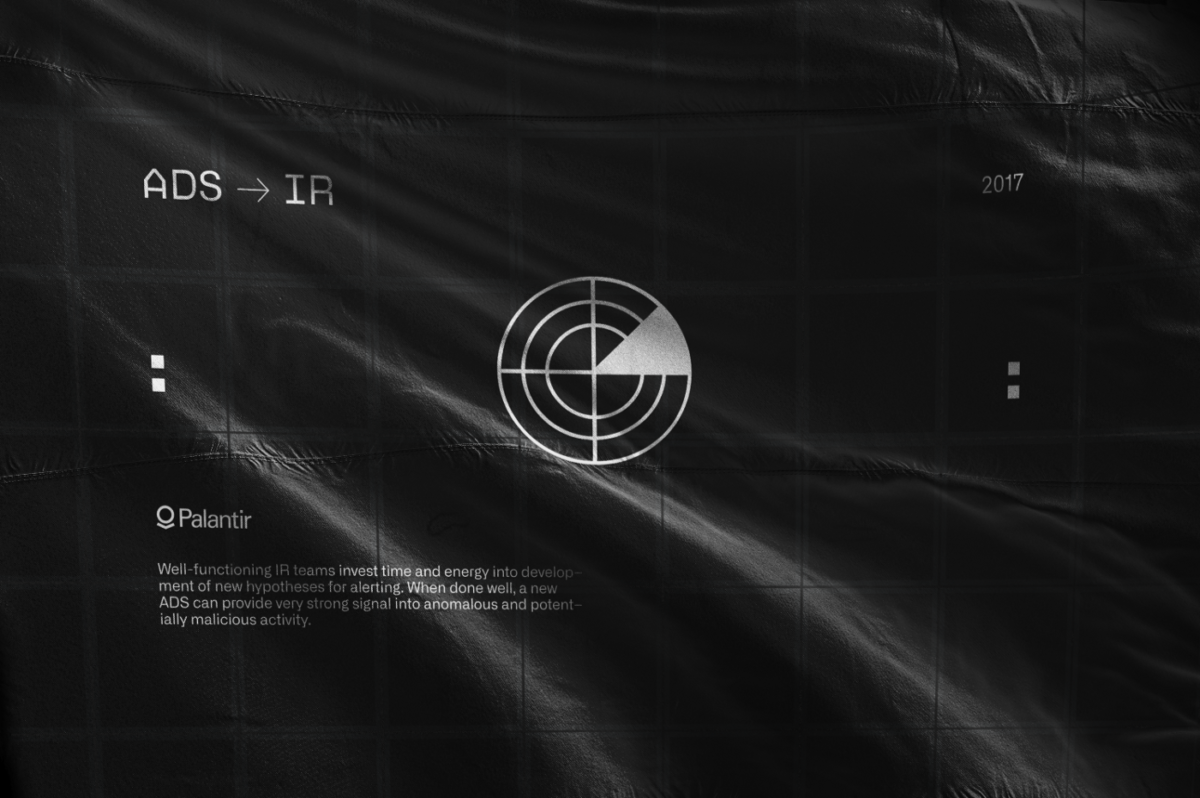
Custom detection engineering framework
Cílem našeho custom framework (metodologie) je usnadit správu dokumentace a kritických požadavků pro efektivní funkci detekce (detection engineering).
Problém nedostatečné dokumentace:
- Dobrá dokumentace poskytuje kvalitní vhled do nastavení detekce a definuje kritéria pro false positives.
- Špatná, vágní dokumentace nebo nekvalitně dokumentovaný framework má za následek zahlcení monitorovacích mechanizmů alerty.
Detection engineering methodology (DEM)
Detection engineering methodology (DEM) poskytuje jednoduchý návod, jak přistoupit k vytvoření efektivního systému detekce. Jednotlivé kroky lze pak jednoduše namapovat s
Alerting and Detection Strategy (ADS).
Kroky (v ENG):
- Select Target Technique
- AND/OR subtechnique per MITRE ATT&CK
- Research Underlying Technology
- Get initial info from ATT&CK – TTP description, links, other resources
- Choke points
- Process deyails, operators
- Proof of Concept Malware Sample(s)
- Get sample, tools or script etc.
- Run PoC simulation
- Identify Data Sources
- Consult MITRE website for data sources
- Create data model
- Build the Detection
- Final detection data model
- Identify event ID
- Specify target process
- Pivoting to investigation
Alerting and Detection Strategy (ADS)
Koncept Alerting and Detection Strategy (ADS) byl zveřejněn společností Palantir v roce 2017 a jeho originál je možné nalézt Read more..
Na základě Palantir rámec ADS „nám pomáhá vytvářet hypotézy, testovat a spravovat nové ADS“.
Původní rámec ADS od Palantir obsahuje následující části (v ENG):
- Goal
- Categorization
- Strategy Abstract
- Technical Context
- Blind Spots and Assumptions
- False Positives
- Validation
- Priority
- Response
- Additional Resources
Custom ADS Framework s přidanými částmi od DCG420:
- Goal
- Categorization
- Strategy Abstract
- Technical Context
- Blind Spots and Assumptions
- False Positives
- Validation
- Priority
- Response
- Additional Resources
- The detection rule (SIGMA, Generic rule)
- ACD elements use for Blind spots
Pro lepší dokumentaci ADS jsme přidali části pro:
- The detection rule (SIGMA rules, Generic rules) – pro co největší přenositelnost pravidel jsme zvolili SIGMA universal format, který je poskytuje jednoduchou konverzi do jazyka pro SIEM, který se nachází v prostředí obránce.
- ACD elements use for Blind spots – ACD elementy odpovídají Engage ID dle MITRE Engage.
Praktickému využití této custom metodologie se budeme věnovat v dalších článcích.
Zdroje:
https://blog.palantir.com/alerting-and-detection-strategy-framework-52dc33722df2
https://github.com/SigmaHQ/sigma